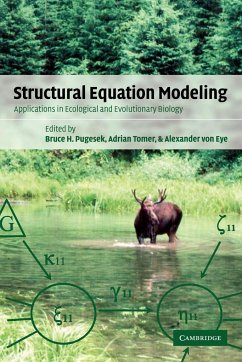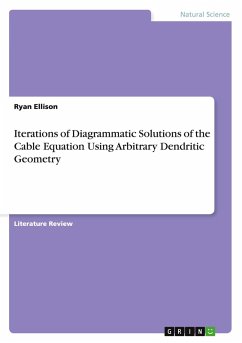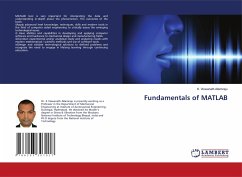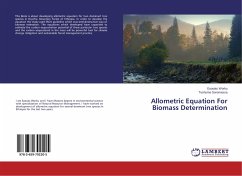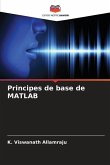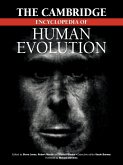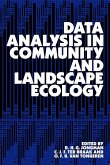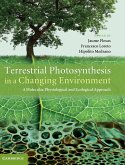Structural Equation Modeling
Applications in Ecological and Evolutionary Biology
Herausgeber: Pugesek, Bruce H.; Eye, Alexander Von; Tomer, Adrian
Structural Equation Modeling
Applications in Ecological and Evolutionary Biology
Herausgeber: Pugesek, Bruce H.; Eye, Alexander Von; Tomer, Adrian
- Broschiertes Buch
- Merkliste
- Auf die Merkliste
- Bewerten Bewerten
- Teilen
- Produkt teilen
- Produkterinnerung
- Produkterinnerung
Structural equation modelling (SEM) is a technique that is used to estimate, analyse and test models that specify relationships among variables.
Andere Kunden interessierten sich auch für
![Iterations of Diagrammatic Solutions of the Cable Equation Using Arbitrary Dendritic Geometry Iterations of Diagrammatic Solutions of the Cable Equation Using Arbitrary Dendritic Geometry]() Ryan EllisonIterations of Diagrammatic Solutions of the Cable Equation Using Arbitrary Dendritic Geometry13,99 €
Ryan EllisonIterations of Diagrammatic Solutions of the Cable Equation Using Arbitrary Dendritic Geometry13,99 €![Fundamentals of MATLAB Fundamentals of MATLAB]() K. Viswanath AllamrajuFundamentals of MATLAB27,99 €
K. Viswanath AllamrajuFundamentals of MATLAB27,99 €![Allometric Equation For Biomass Determination Allometric Equation For Biomass Determination]() Eyosias WorkuAllometric Equation For Biomass Determination33,99 €
Eyosias WorkuAllometric Equation For Biomass Determination33,99 €![Principes de base de MATLAB Principes de base de MATLAB]() K. Viswanath AllamrajuPrincipes de base de MATLAB26,99 €
K. Viswanath AllamrajuPrincipes de base de MATLAB26,99 €![The Cambridge Encyclopedia of Human Evolution The Cambridge Encyclopedia of Human Evolution]() Stephen Jones / D. Martin / R. Pilbeam (eds.)The Cambridge Encyclopedia of Human Evolution89,99 €
Stephen Jones / D. Martin / R. Pilbeam (eds.)The Cambridge Encyclopedia of Human Evolution89,99 €![Data Analysis in Community and Landscape Ecology Data Analysis in Community and Landscape Ecology]() C. J. F. Ter BraakData Analysis in Community and Landscape Ecology59,99 €
C. J. F. Ter BraakData Analysis in Community and Landscape Ecology59,99 €![Terrestrial Photosynthesis in a Changing Environment Terrestrial Photosynthesis in a Changing Environment]() Terrestrial Photosynthesis in a Changing Environment150,99 €
Terrestrial Photosynthesis in a Changing Environment150,99 €-
-
-
Structural equation modelling (SEM) is a technique that is used to estimate, analyse and test models that specify relationships among variables.
Produktdetails
- Produktdetails
- Verlag: Cambridge University Press
- Seitenzahl: 424
- Erscheinungstermin: 1. November 2008
- Englisch
- Abmessung: 229mm x 152mm x 25mm
- Gewicht: 685g
- ISBN-13: 9780521104029
- ISBN-10: 0521104025
- Artikelnr.: 25686669
- Herstellerkennzeichnung
- Libri GmbH
- Europaallee 1
- 36244 Bad Hersfeld
- gpsr@libri.de
- Verlag: Cambridge University Press
- Seitenzahl: 424
- Erscheinungstermin: 1. November 2008
- Englisch
- Abmessung: 229mm x 152mm x 25mm
- Gewicht: 685g
- ISBN-13: 9780521104029
- ISBN-10: 0521104025
- Artikelnr.: 25686669
- Herstellerkennzeichnung
- Libri GmbH
- Europaallee 1
- 36244 Bad Hersfeld
- gpsr@libri.de
Part I. Theory: 1. Structural equation modelling: an introduction Scott L.
Hershberger, George A. Marcoulides and Makeba M. Parramore; 2. Concepts of
structural equation modelling in biological research Bruce H. Pugesek; 3.
Modelling a complex conceptual theory of population change in the Shiras
moose: history and recasting as a structural equation model Bruce H.
Pugesek; 4. A short history of structural equation models Adrian Tomer; 5.
Guidelines for the implementation and publication of structural equation
models Adrian Tomer and Bruce H. Pugesek; Part II. Applications: 6.
Modelling intra-individual variability and change in bio-behavioural
developmental processes Patricia H. Hawley and Todd D. Little; 7. Examining
the relationship between environmental variables and ordination axes using
latent variables and structural equation modelling James B. Grace; 8. From
biological hypotheses to structural equation models: the imperfection of
causal translation Bill Shipley; 9. Analysing dynamic systems: a comparison
of structural equation modelling and system dynamics modelling Peter S.
Hovmand; 10. Estimating analysis of variance models as structural equation
models Michael J. Rovine and Peter C. M. Molenaar; 11. Comparing groups
using structural equations James B. Grace; 12. Modelling means in latent
variable models of natural selection Bruce H. Pugesek; 13. Modeling
manifest variables in longitudinal designs - a two-stage approach Bret E.
Fuller, Alexander von Eye; Philip K. Wood and Bobby D. Keeland; Part III.
Computing: 14. A comparison of the SEM software packages Amos, EQS and
LISREL Alexander von Eye and Bret E. Fuller; Index.
Hershberger, George A. Marcoulides and Makeba M. Parramore; 2. Concepts of
structural equation modelling in biological research Bruce H. Pugesek; 3.
Modelling a complex conceptual theory of population change in the Shiras
moose: history and recasting as a structural equation model Bruce H.
Pugesek; 4. A short history of structural equation models Adrian Tomer; 5.
Guidelines for the implementation and publication of structural equation
models Adrian Tomer and Bruce H. Pugesek; Part II. Applications: 6.
Modelling intra-individual variability and change in bio-behavioural
developmental processes Patricia H. Hawley and Todd D. Little; 7. Examining
the relationship between environmental variables and ordination axes using
latent variables and structural equation modelling James B. Grace; 8. From
biological hypotheses to structural equation models: the imperfection of
causal translation Bill Shipley; 9. Analysing dynamic systems: a comparison
of structural equation modelling and system dynamics modelling Peter S.
Hovmand; 10. Estimating analysis of variance models as structural equation
models Michael J. Rovine and Peter C. M. Molenaar; 11. Comparing groups
using structural equations James B. Grace; 12. Modelling means in latent
variable models of natural selection Bruce H. Pugesek; 13. Modeling
manifest variables in longitudinal designs - a two-stage approach Bret E.
Fuller, Alexander von Eye; Philip K. Wood and Bobby D. Keeland; Part III.
Computing: 14. A comparison of the SEM software packages Amos, EQS and
LISREL Alexander von Eye and Bret E. Fuller; Index.
Part I. Theory: 1. Structural equation modelling: an introduction Scott L.
Hershberger, George A. Marcoulides and Makeba M. Parramore; 2. Concepts of
structural equation modelling in biological research Bruce H. Pugesek; 3.
Modelling a complex conceptual theory of population change in the Shiras
moose: history and recasting as a structural equation model Bruce H.
Pugesek; 4. A short history of structural equation models Adrian Tomer; 5.
Guidelines for the implementation and publication of structural equation
models Adrian Tomer and Bruce H. Pugesek; Part II. Applications: 6.
Modelling intra-individual variability and change in bio-behavioural
developmental processes Patricia H. Hawley and Todd D. Little; 7. Examining
the relationship between environmental variables and ordination axes using
latent variables and structural equation modelling James B. Grace; 8. From
biological hypotheses to structural equation models: the imperfection of
causal translation Bill Shipley; 9. Analysing dynamic systems: a comparison
of structural equation modelling and system dynamics modelling Peter S.
Hovmand; 10. Estimating analysis of variance models as structural equation
models Michael J. Rovine and Peter C. M. Molenaar; 11. Comparing groups
using structural equations James B. Grace; 12. Modelling means in latent
variable models of natural selection Bruce H. Pugesek; 13. Modeling
manifest variables in longitudinal designs - a two-stage approach Bret E.
Fuller, Alexander von Eye; Philip K. Wood and Bobby D. Keeland; Part III.
Computing: 14. A comparison of the SEM software packages Amos, EQS and
LISREL Alexander von Eye and Bret E. Fuller; Index.
Hershberger, George A. Marcoulides and Makeba M. Parramore; 2. Concepts of
structural equation modelling in biological research Bruce H. Pugesek; 3.
Modelling a complex conceptual theory of population change in the Shiras
moose: history and recasting as a structural equation model Bruce H.
Pugesek; 4. A short history of structural equation models Adrian Tomer; 5.
Guidelines for the implementation and publication of structural equation
models Adrian Tomer and Bruce H. Pugesek; Part II. Applications: 6.
Modelling intra-individual variability and change in bio-behavioural
developmental processes Patricia H. Hawley and Todd D. Little; 7. Examining
the relationship between environmental variables and ordination axes using
latent variables and structural equation modelling James B. Grace; 8. From
biological hypotheses to structural equation models: the imperfection of
causal translation Bill Shipley; 9. Analysing dynamic systems: a comparison
of structural equation modelling and system dynamics modelling Peter S.
Hovmand; 10. Estimating analysis of variance models as structural equation
models Michael J. Rovine and Peter C. M. Molenaar; 11. Comparing groups
using structural equations James B. Grace; 12. Modelling means in latent
variable models of natural selection Bruce H. Pugesek; 13. Modeling
manifest variables in longitudinal designs - a two-stage approach Bret E.
Fuller, Alexander von Eye; Philip K. Wood and Bobby D. Keeland; Part III.
Computing: 14. A comparison of the SEM software packages Amos, EQS and
LISREL Alexander von Eye and Bret E. Fuller; Index.

